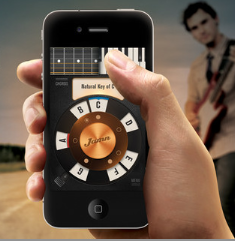Music playback in the 21st century has plunged more than ever into ‘digital-this, digital-that.’ Vinyl, which reaches back wholly to the opposite end of the playback spectrum, has made somewhat of a consumer comeback but the usual debates over quality and the constant deterioration of records themselves rages onward. Add the higher price of producing good quality vinyl and from a certain angle, it can be difficult to see the good in their ongoing production.
What would audiophiles and vinyl enthusiasts say though, if records and the music locked inside them, were suddenly made from simple lines drawn on paper, rather than grooves carved into a disc?
This idea is being taken for a budding test drive, thanks to Avoka; an artist and creative collective based in Rennes, France, founded in 2010. Their work is often shown in the form of artistic projects or installations. As explained on Avoka’s website, these works widely “explore [the areas of] interdisciplinary writing, music, video projection, interactive digital arts, theater cinema [and the] manipulation of objects.” Furthermore, backing of both emerging and seasoned artists for work is another of Avoka’s principle philosophies.
The sound installation for ‘drawing your own music’ is titled “Dyskograf.” Each piece of what one would expect to find with a traditional record player is replaced with a more sustainable mechanism or medium. Ordinary, black, felt markers, act as the medium for “composing” what will be heard at playback. Instead of a diamond-tipped needle and arm, the drawings in question are scanned and interpreted with a camera-equipped arm. A specialty software program, undisclosed by Avoka, transforms any drawing into a musically coherent sequence. Other aspects of record playback –RPM switches for the standard 33, 45 and 78 speeds for example– are visible on the Dyskograf player, as well as an additional “Pitch” dial.
Taking into consideration how this machine is designated as an interactive piece of art meant for mass experimentation, Dyskograf certainly balances appeal and education well. The thought of a unique ‘disc print’ holding a one-of-a-kind beat and musical hook, created from the second unique process of drawing and visual imagery, opens the door for all kinds of cross-art correlations. The sequence drawn and demoed in the video below is both striking and yet, still minimal. If this technology were able to hone in on more instrumental tones and if there is any semblance of logistics in creating beats, (e.g. length or shape of line, width and repetition, etc.) then the possibilities for joint visual artist and musician work could explode into entirely new territory where audio-visual collaboration becomes complete audio visual fusion. Let’s not even start imagining the rhythmic control DJs could implement if these paper discs could be manually spun and scratched…
See for yourself in Dyskograf’s demo video below:
Dyskograf from Jesse Lucas on Vimeo.
Kira is an old school music nerd with a love for all things creative; always searching for music’s common ground. She graduated with an M.A. in Performing Arts Administration from New York University. Drop her a tweet @shadowmelody1

















Comments are closed.